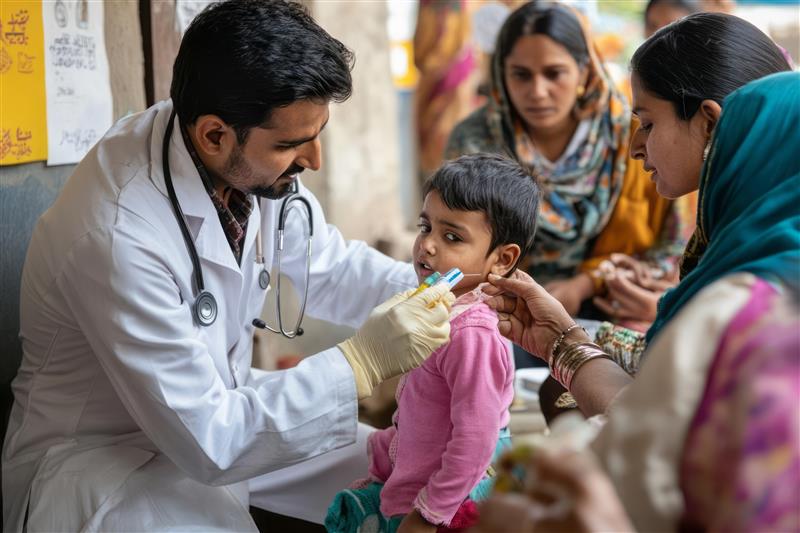One of India’s central goals is to achieve universal health coverage (UHC). However, can UHC become a reality without making patient safety a key component? The country’s ambitious vision to provide high-quality, accessible, and affordable healthcare to its population will stay a fleeting dream if the healthcare system continues to grapple with the silent epidemic of unsafe practices.
According to the World Health Organisation, almost one in 10 patients is harmed in healthcare, and over three million deaths occur due to unsafe care annually. In low and middle-income countries, almost four in 100 people die from unsafe care. Almost 80% of this harm can be avoided1.
In India’s evolving healthcare landscape, the question is not just how many people are covered, but how well they are covered. True UHC is a testament to the system’s ability to deliver care that is effective and, most importantly, safe. Policy and practice must undergo a shift to ease the transition from a volume-based to a value-based healthcare model. It is crucial to proactively address systemic failures in a manner that aligns with national health goals, making patient safety a primary catalyst for achieving a more sustainable healthcare future for India.
The toll of unsafe healthcare
India faces myriad challenges when it comes to safe healthcare. Unsafe injection practices, such as reusing syringes and needles, lead to the transmission of bloodborne illnesses. High rates of healthcare-associated infections strain healthcare resources, increase morbidity and mortality, and cause healthcare expenditure to rise. Improper labelling, dosage miscalculations, and the lack of patient education lead to medication errors. Biomedical waste is not handled or disposed of properly, posing a risk to patient safety and increasing the risk of healthcare-associated infections among patients. The result of these challenges is prolonged illness, permanent disability, and a profound loss of trust in the healthcare system.
The human cost of unsafe healthcare practices is also linked to a colossal economic cost. Adverse events cost the healthcare system $20 billion every year. Some experts also find that hospital-acquired infections alone costs between $35.7 billion and $45 billion annually2. For patients, unsafe healthcare procedures lead to longer hospital stays, more diagnostic tests, and further corrective treatments. This can push vulnerable families into poverty. Furthermore, unsafe practices reduce workforce productivity, which can adversely affect the financial stability of a household and the economy.
Policy challenges
The country’s unique healthcare landscape presents several policy challenges. One of the key challenges in terms of policy is the lack of a robust and standardised error reporting system. Without reliable data, it is almost impossible to measure the scale of the problem or create solutions.
Another hurdle is the absence of consistent accreditation and regulatory oversight. While organisations such as the National Accreditation Board for Hospitals & Healthcare Providers (NABH) set high standards, only a negligible percentage of hospitals in India are accredited. The vast majority of smaller private clinics and public facilities operate without standardised protocols, leading to variations in quality.
These problems are further complicated due to inadequate training and capacity building, especially in rural areas. Many of the healthcare staffers in several healthcare facilities are overworked, may lack training in patient safety protocols, infection control, and effective communication skills.
Proposing solutions
Addressing these challenges requires a multi-pronged approach that combines regulation and a fundamental culture shift. It is necessary to strengthen and enforce regulations and standards across all healthcare settings. The National Patient Safety Implementation Framework (NPSIF) is a crucial step in this direction. However, its guidelines must become binding regulations for all facilities, regardless of size or location. Policies should mandate the use of surgical safety checklists, standardised infection control protocols, and the implementation of electronic health records with built-in safety features like medication alerts.
Another solution is to mandate the creation of an adverse event reporting system on a national level that allows healthcare professionals to report errors and near-misses without fear of reprisal, ensuring this data is collected and analysed. This data can be used to identify concerning patterns, such as high rates of infections or common medication errors in specific areas. Such insights can be used to frame national guidelines and allocate resources.
Leveraging technology is essential for enhancing patient safety. Policies must promote the widespread adoption of electronic health recordsequipped with guardrails. Furthermore, AI can be used to analyse a patient’s medical history to prevent prescribing errors, while barcoding in medication ensures the “five rights” of drug administration. Advanced data analytics can predict adverse events, such as infections, in real time, allowing for timely intervention. Technology can also bridge gaps in manpower, preventing healthcare professionals from being overworked and preventing mistakes. Lasting change requires heavy investment in workforce training and education. Continuous professional development programmes should focus on practical skills such as infection control, medication management, and effective teamwork.
The journey toward UHC is a profound commitment to delivering care that is fundamentally safe and patient-centric. While challenges exist, they are not insurmountable. Embracing a proactive and policy-driven approach can create a healthcare system that prioritises patient safety. It also requires investing in a well-trained workforce, standardising care protocols, and, most importantly, empowering patients as active participants in their own safety. Moving forward, patient safety must be at the very core of India’s health policy. Only by making a steadfast commitment to this principle can the country ensure that every healthcare interaction contributes to a healthier and more prosperous nation.
[1]https://www.who.int/news-room/fact-sheets/detail/patient-safety






